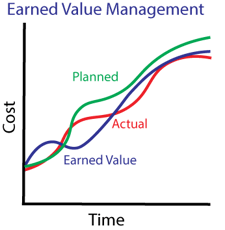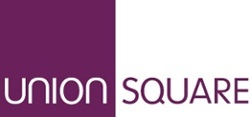Why Aren’t Project Managers Taking Responsibility for Their Projects?
 It wasn’t long ago that firm management took a “need-to-know” approach with sharing project performance information with staff. Today, most firms have changed their attitude about access to project information. Firm managers want project managers to be engaged with the financial results of their projects and have taken great steps to train them to use the Deltek Vision reporting tools and dashboards. Still, project managers are intimidated and paralyzed by the information they receive.
It wasn’t long ago that firm management took a “need-to-know” approach with sharing project performance information with staff. Today, most firms have changed their attitude about access to project information. Firm managers want project managers to be engaged with the financial results of their projects and have taken great steps to train them to use the Deltek Vision reporting tools and dashboards. Still, project managers are intimidated and paralyzed by the information they receive.
So why are project managers not taking responsibility for their projects?
- Budgets are not easy to access or review against actual performance
- Reports are complex and rely heavily upon the accounting cycle that many project managers don’t understand
- Too much information in reports makes it difficult to focus on what is important
- Analyzing data requires pulling information into Excel for What-If scenarios
- Access to information “on-the-go” is not available
How Can We Change This?
Enter iAccess. The tool built for project managers to provide them the information they need at their fingertips to successfully manage projects. Even more, it’s ready to go right out of the box. Sure, that sounds too good to be true and one might wonder what you get with iAccess’ standard configuration.
Here’s a high-level summary. An iAccess core feature that requires no configuration provides a simple project review tool that allows users to quickly review, analyze, and focus on projects needing attention. Any project accessed will appear with current contract, labor, and expense information in graphical and tabular formats at the project or lower levels. This removes the need of having complicated reports and performing What-If scenarios.
Can iAccess Do More?
iAccess, like Deltek Vision has the flexibility to meet the different and complex needs of each individual firm. From simple custom configuration of reports to in-depth configuration of projects, iAccess provides the same information that’s stored within Deltek Vision to project managers from anywhere they have an internet connection.
With just some minimal configuration, project managers can use iAccess as a comprehensive project management tool from the beginning of the project through closeout by using the planning functionality. Starting with an original budget, project managers can interact with their projects as needed to review actual data and then provide estimates of additional effort required to complete the project.
Stay Connected with iAccess
The real-time connection to your Deltek Vision database and the mobile accessibility of the iAccess tool may be the missing link in motivating your project managers to take more control over their project financial management responsibilities. The use of iAccess allows them to absorb data in a friendly format while creating a platform for predictive information entry and sharing across the firm. Stop giving project managers an easy excuse for not taking responsibility.



 Full Sail Partners, a Deltek Premier Partner, is proud to announce that
Full Sail Partners, a Deltek Premier Partner, is proud to announce that  Over the past couple of decades, advances in technology have significantly changed the way businesses are run. As a positive result, employees have increased their productivity as they are able to do more with their available time. On the other hand, with the various ways of receiving data now, an enormous amount has been and is currently being collected which has exponentially increased the time required to manage it. Putting an effective document management system in place has become crucial to ensure successful business operations. Employees must understand how and where to store important files and project information to keep business running smoothly.
Over the past couple of decades, advances in technology have significantly changed the way businesses are run. As a positive result, employees have increased their productivity as they are able to do more with their available time. On the other hand, with the various ways of receiving data now, an enormous amount has been and is currently being collected which has exponentially increased the time required to manage it. Putting an effective document management system in place has become crucial to ensure successful business operations. Employees must understand how and where to store important files and project information to keep business running smoothly.
 For project-based firms, measuring current firm performance is the most significant indicator of future firm performance. Furthermore, by using trend data, firms can forecast cost and schedule variances in the early stage of a project. A preferred method by project managers to factor this trend data is the earned value management technique.
For project-based firms, measuring current firm performance is the most significant indicator of future firm performance. Furthermore, by using trend data, firms can forecast cost and schedule variances in the early stage of a project. A preferred method by project managers to factor this trend data is the earned value management technique. 
 Document management in the AEC Industry is more critical than most. Union Square can help your firm integrate all relevant data, allowing you to spend less time organizing and more time executing projects. Union Square enables your firm to store and access critical firm-wide and project information, including documents, financial information, drawings, images, and emails in one central repository. As a result, your firm has the ability to:
Document management in the AEC Industry is more critical than most. Union Square can help your firm integrate all relevant data, allowing you to spend less time organizing and more time executing projects. Union Square enables your firm to store and access critical firm-wide and project information, including documents, financial information, drawings, images, and emails in one central repository. As a result, your firm has the ability to:
 Full Sail Partners and Planifi announced their recently formed strategic partnership. This alliance brings together Full Sail Partners’ world-class consulting services with Planifi’s industry-leading resource planning software “Project Analyzer” to provide architecture and engineering firms with a better way to manage their resources.
Full Sail Partners and Planifi announced their recently formed strategic partnership. This alliance brings together Full Sail Partners’ world-class consulting services with Planifi’s industry-leading resource planning software “Project Analyzer” to provide architecture and engineering firms with a better way to manage their resources.
 As a fan of zombie movies, you can probably guess that The Walking Dead is one of my favorite shows. If you’ve never watched it before, it’s a series that follows a group of survivors as they learn to adapt in a world overrun by zombies. Now, I’m going to let you in on a secret – don’t become attached to any of the main characters, because they are more than likely going to die. It’s the unfortunate reality for any zombie themed flick. Although your firm isn’t facing a zombie apocalypse, they do face several threats that can affect profit margins on fixed fee projects. Let’s find out if any of these classic zombie types are lurking in your fixed fee projects.
As a fan of zombie movies, you can probably guess that The Walking Dead is one of my favorite shows. If you’ve never watched it before, it’s a series that follows a group of survivors as they learn to adapt in a world overrun by zombies. Now, I’m going to let you in on a secret – don’t become attached to any of the main characters, because they are more than likely going to die. It’s the unfortunate reality for any zombie themed flick. Although your firm isn’t facing a zombie apocalypse, they do face several threats that can affect profit margins on fixed fee projects. Let’s find out if any of these classic zombie types are lurking in your fixed fee projects.
 Congratulations! Your firm just won the largest project in its history and it’s time to celebrate, or is it? Unfortunately, winning the big project doesn’t guarantee success and big profits. For project-based firms, project management is synonymous with profit management, but many projects start in the red making it nearly impossible to make a profit. Here’s a look at some common pitfalls project-based firms face before they ever start a project.
Congratulations! Your firm just won the largest project in its history and it’s time to celebrate, or is it? Unfortunately, winning the big project doesn’t guarantee success and big profits. For project-based firms, project management is synonymous with profit management, but many projects start in the red making it nearly impossible to make a profit. Here’s a look at some common pitfalls project-based firms face before they ever start a project.
 It’s finally fall again and you know what that means, the leaves are changing color and the temperature is dropping, but most importantly - football is back and the wait for our favorite teams to take the field is finally over. Nevertheless, what does football and resource planning have to do with each other? Simple, coaches are like project managers, their resources are the players, and the project is the season. So what we can learn from football coaches to become more effective project managers?
It’s finally fall again and you know what that means, the leaves are changing color and the temperature is dropping, but most importantly - football is back and the wait for our favorite teams to take the field is finally over. Nevertheless, what does football and resource planning have to do with each other? Simple, coaches are like project managers, their resources are the players, and the project is the season. So what we can learn from football coaches to become more effective project managers?
 I don’t know of a single Professional Service firm without a formal contract management process. Firms spend significant dollars purchasing contract templates and some even retain legal counsel for review. Everyone knows that the contract is an important document in any project undertaking.
I don’t know of a single Professional Service firm without a formal contract management process. Firms spend significant dollars purchasing contract templates and some even retain legal counsel for review. Everyone knows that the contract is an important document in any project undertaking.